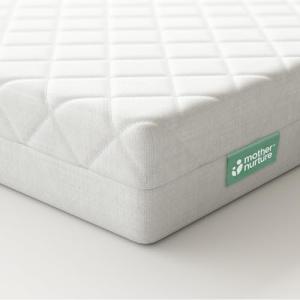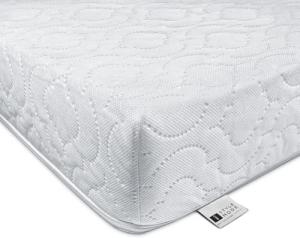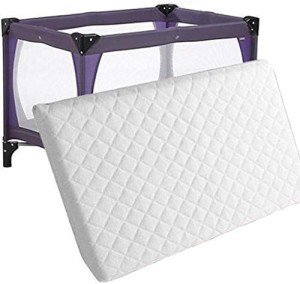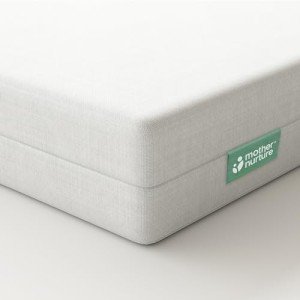As parents embark on the journey of raising their little ones, the importance of a safe, comfortable sleeping environment cannot be overstated. One of the most critical components of a baby’s bedtime setup is the crib mattress. Parents today are increasingly turning to breathable baby crib mattresses with waterproof covers, and for good reason. In this blog post, we will explore the benefits of breathable mattresses, factors to consider when choosing one, and answer frequently asked questions to guide parents in making informed decisions.
What is a Breathable Baby Crib Mattress?
A breathable baby crib mattress is designed to allow air to circulate freely, reducing the risk of overheating and promoting safe sleep for infants. These mattresses are typically made from materials that are more porous than traditional crib mattresses, ensuring that airflow is maximized. Coupled with waterproof covers, they also provide a barrier against moisture, protecting the mattress from spills, drool, and diaper leaks.
Key Benefits
| Benefit | Explanation |
|---|---|
| Temperature Regulation | Breathable materials help keep babies cool, preventing overheating. |
| Enhanced Safety | Improved airflow reduces the risk of suffocation and increases overall safe sleep. |
| Easy to Clean | Waterproof covers make cleaning simple and effective, safeguarding against mold and bacteria. |
| Comfort | Breathable mattresses provide essential support and a comfortable sleep surface. |
| Durability | High-quality breathable materials can offer longer-lasting performance compared to traditional options. |
Factors to Consider When Choosing a Breathable Crib Mattress
When selecting a breathable baby crib mattress, there are several critical aspects to take into account:
1. Material Composition
- Certifications: Look for mattresses made from non-toxic materials like organic cotton, natural latex, or certified foams.
- Breathability: Choose mattresses that incorporate technologies designed for airflow, such as mesh fabric or a designed structure.
2. Waterproof Cover
- Quality: Ensure the waterproof cover is both breathable and durable.
- Easily Removable and Washable: A removable cover eases the cleaning process significantly.
3. Firmness
- Infant Safety Standards: Mattresses should provide firm support to reduce the risk of suffocation.
4. Size and Fit
- Standard Crib Dimensions: Ensure the mattress fits snugly in the crib to prevent any gaps which could pose a hazard.
5. Price Point
- Budget vs. Features: While it’s essential to stay within budget, consider how the mattress’s features can affect your baby’s health and wellbeing.
6. Customer Reviews
- Feedback from Other Parents: Look for ratings and reviews to gauge performance, comfort, and longevity.
Top Breathable Baby Crib Mattresses
Here are some popular options that provide excellent breathability and waterproofing:
| Mattress Name | Breathable Material | Waterproof Cover | Firmness Rating | Price Range |
|---|---|---|---|---|
| Newton Baby Crib Mattress | 100% breathable cotton | Yes | Firm | £300 - £350 |
| Lullaby Earth Healthy Support Mattress | Eco-friendly foam | Yes | Medium | £200 - £250 |
| Naturepedic Organic Cotton Crib Mattress | Organic cotton | Yes | Firm | £280 - £350 |
| Colgate Eco Classica III Crib Mattress | Eco-friendly foam | Yes | Firm | £150 - £250 |
| Graco Premium Foam Crib and Toddler Mattress | Foam with ventilation | Yes | Medium | £100 - £150 |
FAQs about Breathable Baby Crib Mattresses
Q1: Are breathable baby crib mattresses safe for newborns?
Yes, breathable crib mattresses are designed with safety in mind. Their materials promote airflow and reduce the risk of suffocation while providing necessary support.
Q2: How often should I clean the mattress cover?
It’s recommended to clean the mattress cover regularly, especially after spills or accidents. Depending on the usage, a monthly wash is usually sufficient.
Q3: Can I use a breathable mattress for toddlers as well?
Absolutely! Many breathable mattresses are dual-sided, offering a firmer side for infants and a softer side for toddlers.
Q4: What’s the difference between a breathable mattress and a conventional one?
Breathable mattresses allow for better airflow, which helps regulate temperature and reduces the risk of overheating. Conventional mattresses may trap heat and moisture, posing potential risks.
Q5: How long do breathable mattress lasts?
Most high-quality breathable mattresses can last up to 5-7 years or more with proper care, making them a worthwhile investment.
Selecting the right crib mattress is essential for ensuring a safe, comfortable sleep for your baby. Breathable baby crib mattresses with waterproof covers provide multiple benefits, from temperature regulation to easy maintenance. By considering the factors mentioned above—such as material, size, and firmness—parents can make informed decisions that enhance their baby's sleeping environment. With a plethora of options available, parents have the opportunity to create a safe haven for their infants as they drift off into dreamland. Investing in a quality breathable crib mattress can provide peace of mind, knowing that your baby is sleeping safely and soundly.






